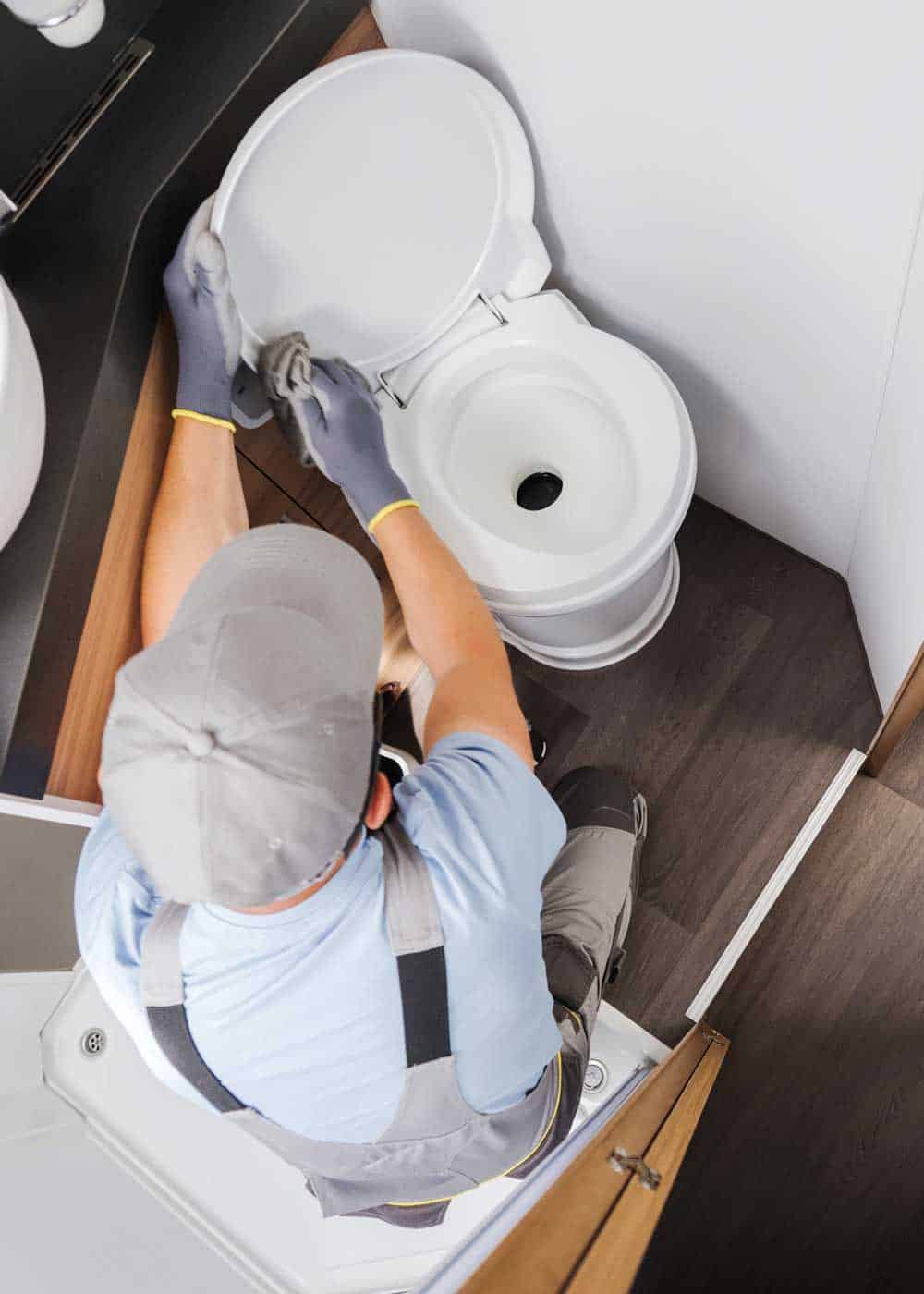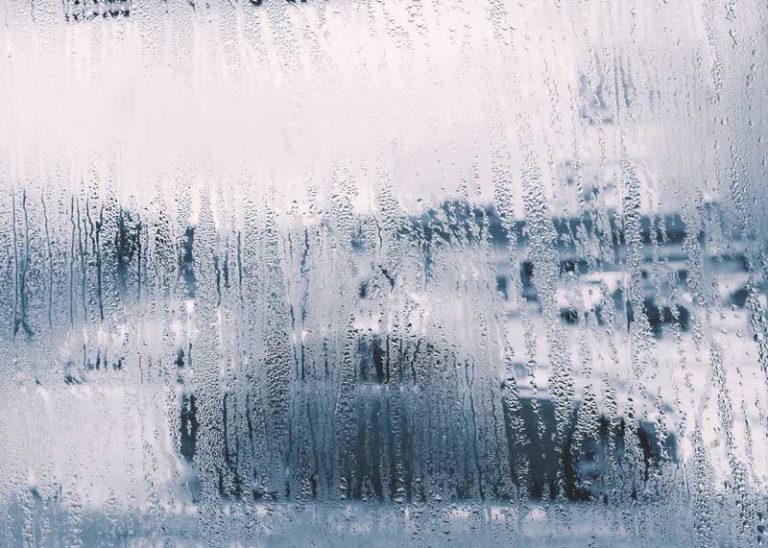RV Toilet Seal Guide: 2 Types (Replace, Lubricate, Lifespan, Maintain)
An RV toilet seal is an essential component of an RV. The seal keeps the black water tank odor out of your rig. RV toilets use two toilet seals (rubber, foam, or wax) that block odors from rising and keep water where it belongs.
Whether you have a standard gravity-fed RV toilet, RV cassette toilet, macerator toilet, composting toilet, or dry flush toilet, the RV toilet seal mechanism is a vital feature that needs proper care and maintenance to increase its lifespan and reduce times between replacements.

Continue reading to learn more about lubrication, replacement, lifespan, maintenance, winterization, and storage tips for RV toilet seals.
2 Types of RV Toilet Seals
There are two types of seals in your RV toilet.
- Flange: This toilet seal creates a water and air-tight seal when the toilet connects to the plumbing.
- Flapper Seal: This seal creates an airtight and watertight seal between the flapper and the air in the black water tank. When you step to flush, it lowers the flapper and breaks the seal to the toilet bowl.
1. Replacing RV Toilet Seal (Flange)
Replacing toilet flange seals on your RV requires some basic plumbing knowledge or being comfortable watching tutorial videos and following instructions.
Of course, you can hire an RV repair shop to replace the seal on your RV toilet. But it isn’t a hard project, and many RVers can do this in about 15 minutes.
To replace your RV toilet seal on your own, follow the instructions below:
- Turn off the water supply
- Unscrew the toilet
- Remove bolts and lift the toilet bowl to view the flange seal
- Remove the old top and bottom seal and clean
- Replace the seal
- Reattach the bowl base
- Reattach the toilet to the floor
- Turn on the water supply
- Test your toilet
Should you see any RV toilet seal damage further than regular wear-and-tear, consult with a professional RV technician to ensure you’re not overlooking plumbing issues aside from seal replacement.
You’ll want to keep an eye open for water damage. This can be in the floor or nearby walls. For most RV owners, fixing floor rot will be beyond their skill set.
Don’t ignore wet or soft floorboards. It will only get worse with time.
Here’s a simple video tutorial to help your change a flange seal in your RV toilet.
If the failed seal isn’t the toilet flange, it will be a much easier job.
2. Replacing Toilet Seal Not Holding Water
If the toilet flapper won’t hold water or you’re getting some bad odors in your RV, the toilet seal in the flapper might need to be replaced.
In many RV toilet models, it is a very simple process. It might take as few as 3 minutes.
For this job, you’ll need gloves and a replacement gasket (seal). You’ll probably want some paper towels and a garbage bag for wiping the surface.
Dometic Toilet Seal Replacement (Video)
Here’s a quick video guide to replacing the toilet seal in your Dometic RV toilet. This applies to the 300, 310, and 320 series toilets.
3. Lubricating Your RV Toilet Seal
Lubricating your RV toilet seal is an essential maintenance step because your seal can dry out and even crack. For example, a crack in the toilet seal can cause odors to leak out of your toilet and reduce the overall lifespan of your RV toilet seal.
There are two methods to lubricate the seal of your RV toilet. The first is a DIY method of applying vaseline with a toothbrush or toilet brush. This is best used as a short-term fix and must-needed lubrication solution before replacement.
The best way to regularly lubricate your RV toilet seal is to use products like Thetford RV Toilet Seal Lube and Conditioner.
To use an RV toilet seal lubricant, follow the steps below:
- Clean your toilet
- Add enough lubricant to cover the toilet valve and seal
- Let soak for a few hours
After letting your lubricant soak, you can use and flush your RV toilet as usual.

4. Lifespan of RV Toilet Seals
The lifespan of an RV toilet seal is 20 years. There are two main types of seals, wax and rubber (or foam) seals, with the same average lifespan.
The lifespan of your toilet seal can be impacted by extreme temperatures, exposure to harsh chemicals, or even an impact on your RV. Excessive vibrations (like hours of travel on rough roads) may affect the seal of your toilet flange.
If you want to extend the lifespan of your RV toilet seal, be sure to maintain your RV and store it well between uses regularly.
Are Wax Toilet Rings Good in an RV?
Not really. Because of vibration and high temperatures, wax rings can fail in an RV. They can be successfully used in a stationary, climate-controlled RV.
If you’ll be using your RV to travel, choose a rubber or foam seal.
Will a regular toilet seat fit an RV toilet? Here are 3 things to know.
5. Maintenance of Toilet Seals
Regular toilet maintenance is essential for reducing unpleasant odors in your RV. Like a regular toilet, clean and maintain it with a toilet brush and cleaning products.
Alongside standard toilet maintenance, you can maintain your RV toilet seal by regularly using lubricant between storage sessions.
Keep Reading: How to Flush & Clean Your RV Black Water Tank
FAQ about RV Toilet Seals
Learn more about RV toilet seals with answers to frequently asked questions below.
Does a regular toilet seat fit on an RV toilet?
Yes. Depending on the type and model of your RV toilet, a regular toilet seat can fit in an RV.
Many RV’s have comfortable bathrooms that give the feel of a real bathroom and can accommodate lifted toilet seats for elderly owners.
Can you replace the seal on an RV toilet?
Yes. You can replace the seal on an RV toilet, either by yourself, if you have some plumbing know-how, or by hiring an RV toilet service technician.
Replacing the seal on RV toilets is easy but requires several steps, including turning off the water supply line, removing the toilet, replacing the old seal on an RV toilet, and reattaching the toilet to the base.
What is the lifespan of an RV toilet seal?
Wax RV toilet seals and rubber toilet seals both last for around 30 years, especially if you regularly use lubricant and maintain the seal before storing or winterizing.
Final Thoughts
Now you know everything about lubricating, maintaining, extending the lifespan, and replacing seals on RV toilets.
Whether you have a wax seal or rubber seal, RV toilet seals are crucial to ensuring your RV remains a comfortable place, free of unpleasant odors. Save this RV toilet seal guide for the next time you need tips and tricks to maintain, lubricate, and replace your RV toilet seal.
How did it go for you? I Would love to hear about your experience below.






